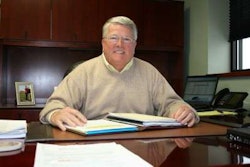President Obama on Tuesday, May 19, set in motion a new national policy aimed at both increasing fuel economy and reducing greenhouse gas pollution for all new cars and light trucks sold in the United States.
The new standards, covering model years 2012-2016, and ultimately requiring an average fuel economy standard of 35.5 mpg in 2016, are projected to save 1.8 billion barrels of oil over the life of the program with a fuel economy gain averaging more than 5 percent per year and a reduction of about 900 million metric tons in greenhouse gas emissions. This would surpass the CAFE law passed by Congress in 2007 that required an average fuel economy of 35 mpg in 2020.
“As a result of this agreement, we will save 1.8 billion barrels of oil over the lifetime of the vehicles sold in the next five years,” Obama said. “And at a time of historic crisis in our auto industry, this rule provides the clear certainty that will allow these companies to plan for a future in which they are building the cars of the 21st century.”
Obama, who previously had committed to enact more stringent fuel economy standards, said the agreement represents a collaboration between the U.S. Department of Transportation, U.S. Environmental Protection Agency, the world’s largest auto manufacturers, the United Auto Workers, leaders in the environmental community, the State of California and other state governments.
“The president brought all stakeholders to the table and came up with a plan to help the auto industry, safeguard consumers and protect human health and the environment for all Americans,” said EPA Administrator Lisa P. Jackson. “A supposedly ‘unsolvable’ problem was solved by unprecedented partnerships. As a result, we will keep Americans healthier, cut tons of pollution from the air we breathe, and make a lasting down payment on cutting our greenhouse gas emissions.”
“A clear and uniform national policy is not only good news for consumers who will save money at the pump, but this policy is also good news for the auto industry, which will no longer be subject to a costly patchwork of differing rules and regulations,” said Carol M. Browner, Assistant to the President for Energy and Climate Change. “This an incredible step forward for our country and another way for Americans to become more energy-independent and reduce air pollution.”
The national policy is designed to provide auto manufacturers regulatory certainty and predictability and includes flexibilities intended to reduce the cost of compliance significantly. The collaboration of federal agencies also allows for clearer rules for all automakers, instead of three standards (USDOT, USEPA and a state standard). The rules will not dictate the size of cars, trucks and SUVs that manufacturers can produce; rather, they will require that all sizes of vehicles become more energy-efficient.
“President Obama is uniting federal and state governments, the auto industry, labor unions and the environmental community behind a program that will provide for the biggest leap in history to make automobiles more fuel-efficient,” said U.S. Transportation Secretary Ray LaHood. “This program lessens our dependence on oil and is good for America and the planet.”













